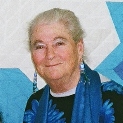Families Come in Many Shapes and Sizes
 When one of my children got married, the photographer was ready to take family pictures of the bride and groom with each of their families. The pictures were to be outside in a lovely courtyard. Somewhere around three quarters of the people in the reception hall got up when called to report for the picture. The couple’s friends who were not family had to reassure guests who didn’t know us well, that the party wasn’t over and we would all return soon!
When one of my children got married, the photographer was ready to take family pictures of the bride and groom with each of their families. The pictures were to be outside in a lovely courtyard. Somewhere around three quarters of the people in the reception hall got up when called to report for the picture. The couple’s friends who were not family had to reassure guests who didn’t know us well, that the party wasn’t over and we would all return soon!
As family members approached the courtyard for the photo session, the photographer first took pictures of the couple. Then, as people kept approaching, he asked if the families were all present now. No, they were still coming. A few more photos of the bride and groom and the question was repeated, followed by a question about whether the groom’s family were all there yet. No, not yet. How about the bride’s family? Yes, those people sitting at that table over there, was the response. So that set of family and couple pictures were taken.
Finally, all of the groom’s family arrived on scene. There were so many of them that the photographer put all of them up on a large outdoor dining area “balcony” and he went down below to take the photos.
The contrast in size of family has played out in many weddings through the years. Once in a while, both families will be large. Often, one will be large and one will be small.
Families come in many shapes and sizes. It’s a fact of life. Some large families are close. Others are not. Some, whether large or small, have members who have differences of opinion on many topics. Siblings, parents, cousins, grandparents – all can find themselves at odds with others in the group over many things. Sometimes relationships become so strained that they break. Sometimes it’s possible to mend the relationship. Sometimes it’s not possible or advisable to do so, especially if there was a history of abuse in the picture.
Looking beyond the immediate picture of nuclear families (Mom, Dad, children), there are larger family structures. The kinship structures of peoples around the world are not identical. In some, kinship is defined by relationships along only the male line. In others kinship is based on the female line. These are quite different from the bilateral, nuclear family kinship system that is characteristic of the majority of families in Western societies today. In some kinship systems, the family is multi-generational, with the eldest members of the family making the decisions for the younger generations. We call these corporate kinship systems. In nuclear family kinship systems, the individual adults make their own decisions for themselves and their families.
Fictive kinship adds another layer to the picture as well. Godparents, sponsors, people who are close friends of a family, can play roles like those of biological relatives. These systems provide extra support to the family as they raise their children.
This complexity comes to mind as I hear the readings for the Feast of the Holy Family. Jesus, Mary, and Joseph were a family. Parents and child together, making their way through life. Their family was a part of a larger corporate family. Kinship included relatives beyond Mary and Joseph. These relatives worked together to support themselves and their children. Kinship passed through the male line, so Jesus was raised as a member of Joseph’s extended family. Fortunately, for those who keep track of such things, the line of King David was quite large by that point in time, so Mary was also descended from David’s line.
Family dynamics – who is in charge, whose authority is primary, who takes care of whom and when – all play a role in how healthy family relationships are. Sirach presents a picture of family relationships that bear imitation. (Sir 3:2-6, 12-14) The reading is all phrased in terms of the parents and their sons, but that’s a feature of the culture of the time. One could easily substitute our less specifically male terms today to make it more inclusive.
“God sets a father in honor over his children; a mother’s authority he confirms over her children. Whoever honors their parents atones for sins, and preserves themselves from them.”
Sirach admonishes his listeners to be kind, respecting and supporting each other. Older folks care for younger ones. Those younger ones in turn care for the older ones as they age. “Kindness to a parent will not be forgotten…”
St. Paul speaks to the Colossians about living as a community. (Col 3:12-17) The same advice he gives regarding communal relationships applies to successful families too. (Successful in this case is a term referring to loving, supportive families.)
Members of the community are to “put on,” (to wear) compassion, kindness, gentleness, humility, patience, and willingness to forgive as the garments that enfold their lives. In their dealings with each other, grievances are to be forgiven because the Lord has forgiven all. Love is the bond of perfection. And above all, the peace of Christ forms all into one body.
We respond to the word of Christ dwelling within us with prayer, songs, and gratefully living in the Lord’s name.
Returning to the family of Joseph and Mary, we again see a loving family living within their tradition. (Lk 2:22-40) After the birth of a son, the family brings the child to the temple. The child is seen as belonging to God. The parents offer a sacrifice of thanksgiving for him. Poorer families offered two turtle doves or pigeons. Wealthier families offered more elaborate sacrifices. Joseph and Mary were not rich, so they offered the two birds in sacrifice.
While at the temple for Jesus’ circumcision and to offer the sacrifice for him, they met two older people who had been promised the great gift of seeing “the Christ of the Lord” before their death. The first was named Simeon. He took Jesus into his arms and praised God for having sent the child who would become “a light for revelation to the Gentiles, and glory for your people Israel.”
The other person was an old woman, a prophetess named Anna. She too gave thanks to God for having seen the child. She told all she met that this child had at last been born.
None of the people involved in these events knew all that would happen to this family and this child. But Simeon and Anna knew he was special, through the gift of the Spirit’s revelation to them. Joseph and Mary knew they had a beautiful baby boy. They gave thanks for his birth and returned to their home to raise him in a loving family and community. We are told that he grew “and became strong, filled with wisdom, and the favor of God was upon him.”
As we live and grow in our families, may the blessings lived by the Holy Family be with us too. May we grow strong together in faith, trust in God, and loving kindness. Does this mean we go around with our eyes cast down and a serious look on our faces? Absolutely not! We are children of a loving God who has a fantastic sense of humor. We are to be joyful and hopeful. We are to laugh at the funny things that happen and at our own foibles. We are to sit around and tell stories of family and friends, and the amazing things we have seen and heard. We are to care about and for each other, not throwing away anyone. All are loved by God.
On this day and in the new year that is fast upon us, may we grow in wisdom, age, and grace as well. May our eyes be open to see the Lord in each other and in those around us. May we grow hearts that are larger and more inclusive, bringing people who have no families or whose loved ones are far away into our circle of love. We are members of biological families, yes, but we are also members of the family of the Lord. That one is HUGE! May we enjoy meeting and growing together in God’s family of love.
Readings for the Feast of the Holy Family of Jesus, Mary, and Joseph – Cycle B










